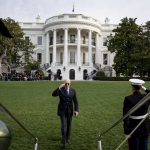There were fewer job openings in August than there were in July, a trend that should help bring down persistently rising inflation.
This bodes well for the Federal Reserve's efforts to reduce inflation without triggering a recession. Although layoffs rose slightly in August, the official jobs data released on Tuesday showed that they remained historically low. In addition, hiring activity generally was flat that month.
Altogether, the data seemed to indicate that, despite removing job ads, businesses were not laying off employees or slowing their hiring practices.
According to Layla O'Kane, a senior economist at labor analytics business Lightcast, employers are thinking about who they don't need to hire, but they are not talking about who they need to lay off. Employers are thinking about who they don't need to hire, she said.
The government reported on Tuesday that there were 10.1 million posted positions as of the last day of August, a significant drop from July's 11.2 million openings. The number of available jobs reached a record high of about 11.9 million in March.
Even though most analysts believed it would take more than one report to shift the Fed's trajectory, the data propelled major U.S. markets higher because it is a potential indicator that the Fed could reduce its rapid pace of rate hikes. Essential monthly employment figures for the United States are released on the first Friday of each month.
In midmorning trade, the Dow Jones Industrial Average added to its early gains, rising by another 770 points (2.5%).
In a rare show of restraint as central bankers around the world rapidly lift rates to combat rising prices, the report on job vacancies followed news that Australia's central bank had announced an interest rate hike that was less than its prior hikes.
Short-term interest rates at the Federal Reserve have risen dramatically since March, when they were near zero to confront the highest inflation in 40 years, driven in large part by Biden's failed domestic policies and a prolonged war on energy.
By increasing rates, the Federal Reserve hopes to dampen employment demand and slow the economy. However, this will have the unintended consequence of making consumer and commercial loans more expensive. While salary gains of roughly 6.5% per year are generally well received by workers, the Federal Reserve sees them as unsustainable and a major contributor to inflation.
Chairman Jerome Powell and the Federal Reserve Board expect that the recent rapid increase in interest rates (the fastest in around four decades) will discourage businesses from expanding their workforce. Biden's government is now in the position of hoping for bad news in order to prevent even worse developments. As vacancies drop, the pressure on businesses to raise wages to compete for talent should ease. Maintaining smaller wage increases may help reduce price increases.
Inflationary pressure has been reduced, and the Fed has been reassured that there may be a way out without significantly increasing the unemployment rate, according to Derek Tang, an economist at LHMeyer, an economic research business.
Powell has expressed concern that the Federal Reserve's rate hikes may cause a rise in unemployment and even a recession. However, he and other Fed officials have maintained optimism for a "soft landing," in which economic growth slows to the point where inflation is reduced but not to the point where a recession is triggered.
Christopher Waller, a Board of Governors member, has claimed that the Federal Reserve's rate hikes may be able to lower job opportunities and, by extension, inflation pressures, without generating significant job losses. A similar outcome is improbable, though, according to writings by former Treasury Secretary Larry Summers and former IMF head economist Olivier Blanchard. It was discovered that fewer job postings are often followed by an increase in layoffs and the unemployment rate.
However, companies are still hiring for the time being. Tuesday's numbers are noteworthy since Friday will see the release of a crucial report on employment and the unemployment rate. It is expected by economists to indicate that businesses gained 250,000 jobs in September and the unemployment rate remained at 3.7% for a second month running.
Job vacancies and quits have fallen in recent months, suggesting that the labor market is slowing down. To leave for greener (and usually financial) pastures, most workers quit their jobs. There were about 4.2 million job quits in August, down from the record high of 4.5 million in November of last year but still a historically high number.
Mary Daly, president of the Federal Reserve Bank of San Francisco, made similar assessment last week, calling the decrease in job listings and resignations early signals that the labor market is softening. She did note, though, that the Fed would need to see evidence of declining inflation before easing off on interest rate hikes.
The preceding is a summary of an article that originally appeared on Headline USA.




